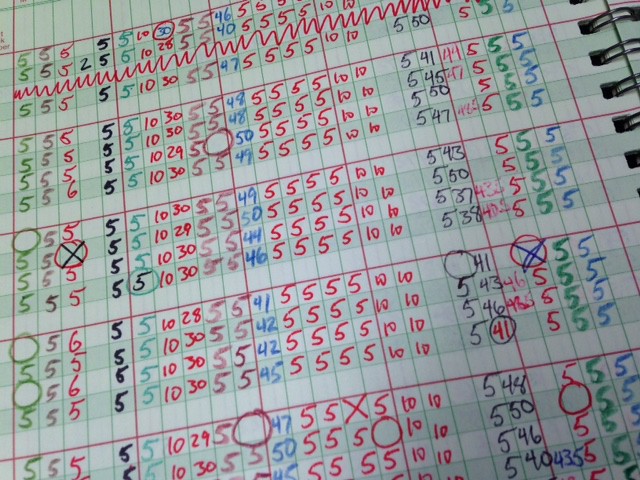Knowing our Stories- developing healthy self-awareness
So off went the Emperor in procession under his splendid canopy. Everyone in the streets and the windows said, “Oh, how fine are the Emperor’s new clothes! Don’t they fit him to perfection? And see his long train!” Nobody would confess that he couldn’t see anything, for that would prove him either unfit for his position, or a fool. No costume the Emperor had worn before was ever such a complete success. “But he hasn’t got anything on,” a little child said.
“We have met the enemy and he is us.”—Walt Kelly 
In the classroom, sometimes the greatest impediment to learning is not our students, but ourselves. A healthy awareness of our our strengths and weaknesses allows us to consider and manage these issues while in the classroom. As much as we think that we are able to hide our personal issues and problems, our students are often quick to see through our façade.
We don’t want to be like the emperor in The Emperor’s New Clothes.[1] His aversion to critique and pride led the emperor to make a complete fool of himself. Instead, we need to seek out others to speak into our professional lives. If we openly address our strengths and weakness with others, it allows us to be authentic and transparent and holds us accountable as we seek to improve. It can also be a catalyst for transformation.
Brookfield recommends the teacher using four lenses to increase their self-awareness: autobiographical lens, students’ lens, the lens of literature and, the lens of co-teachers.[2]
Lens of our Autobiography
- Examine our personality: Understanding ourselves and defining what things are sources of frustration for us professionally is important. Once we identify these areas of frustration, we can ask what steps we can take to grow in these areas. This type of self-awareness is a first step in understanding our students.
- Examine our personal biography: Sometimes things that trigger us can often be traced back to an incident in our past. What do we do with these situations? It can be helpful to develop an action plan to use when these incidents arise.
- Examine our educational background: We tend to teach as we were taught, not how we were taught to teach. We unconsciously have picked up both good and bad practices from our teachers. As we understand why we teach the way we do, we can adjust for our weaknesses.
- Examine our values: We operate and teach out of our values, even if we are not consciously aware of them. We need to be willing to ask ourselves what values we reflect in the classroom, and how this might challenge students who have different value sets.
Lens of Students’ Perceptions
- Ask the students: Our students spend more time with us than anyone else in the profession and we can certainly learn from their feedback. Several times during a term, invite the students to write one positive comment about the class and one improvement that can be made. Collect these statements, tabulate the results and see what is going well and what can be improved.
Lens of Literature
- Read and consider current literature: Exposure to new understandings pertaining to educational theory and critical reflection can be helpful in evaluating our own practice. As lifelong learners we know that there is always room for growth. What does the current research say and what can we learn from this?
Lens of Colleagues Perceptions
- Invite observation: Asking fellow teachers or administrators into the classroom to observe us teaching can be very helpful. We can invite their critique and feedback based on what they observed.
- Consider co-teaching: Working closely with another professional offers a natural accountability system as well as a collaborative emphasis. As we learn from each other we all have opportunities to grow.
Teaching is a highly personal act that often takes place behind closed doors. This can limit the amount of feedback we receive, hindering our self-awareness and ability to grow. Not only does this do a disfavor to our students, but also ourselves.[3] Taking time to invite professional feedback will help us avoid the fate of the proud emperor, and will open up avenues where lasting transformation can take place.
Debbie Kramlich, Ph.D. Candidate
TeachBeyond, Thailand
Photo Credits: The Emperor’s New Clothes, Pam Sanderlin. Collaboration.
technolibrary2014 via Compfight cc.
[1] Hersholt, J. (2015, August 11). The Emperor’s New Clothes. Retrieved May 12, 2016 from http://www.andersen.sdu.dk/vaerk/hersholt/TheEmperorsNewClothes_e.html
[2] Brookfield, Stephen. Becoming a Critically Reflective Teacher. The Jossey-Bass Higher and Adult Education Series. 1st ed. San Francisco: Jossey-Bass, 1995. xiii.
[3] Schollaert, R. (2002). In search of the treasure within: towards schools as learning organisations (No. 8). Garant.




